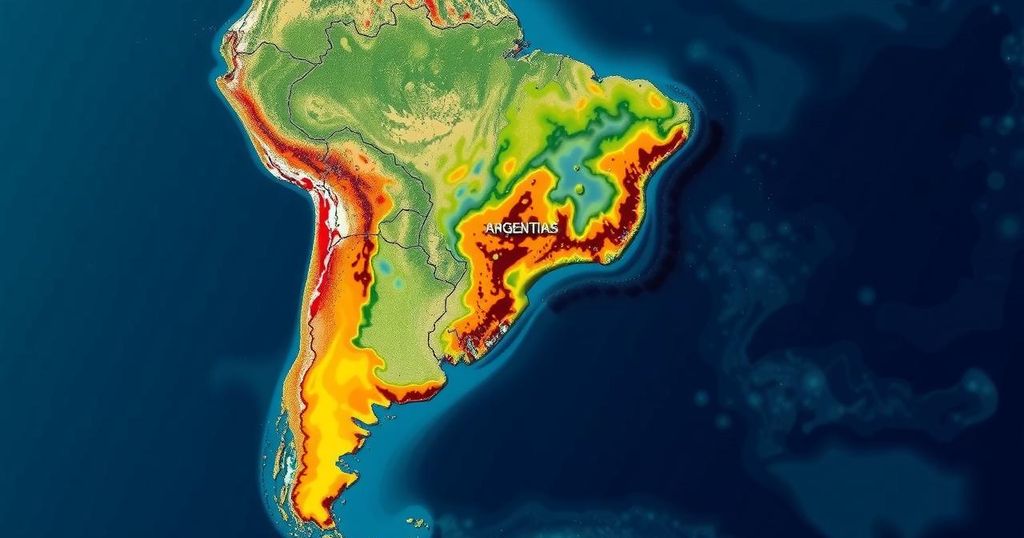Argentina and Southern Brazil Transition to Drier Conditions Following Beneficial Rainfall
Argentina and southern Brazil have experienced a shift from a period of heavy rainfall to a drier phase affecting crop cultivation. While western Argentina received significant rainfall improving soil moisture, concerns remain regarding rising temperatures and the influence of La Niña. The return of rain predicted for early November will be critical for the ongoing agricultural season.
In recent weeks, Argentina and southern Brazil have transitioned from a period of heavy rainfall to a drier phase, following a significant wet season initiated by storm systems that moved across the region. Initially, Argentina faced severe drought conditions at the onset of the 2024-25 agricultural season, with many areas in the western part of the country, including Cordoba—a crucial agricultural zone—lacking rainfall for several months. However, a positive shift occurred as recent storms brought substantial precipitation, with western Argentina receiving between 75 millimeters (approximately 3 inches) and over 150 millimeters (around 6 inches) of rainfall, aiding in soil moisture improvement for crop growth. Southern Brazil, particularly from Rio Grande do Sul to Paraná, also received beneficial rainfall totaling between 50 and 100 millimeters (roughly 2 to 4 inches), bolstering the planting of corn and soybeans, and enhancing early growth conditions. Despite the recent storms, as of October 24, these regions are now experiencing a drier spell, with minimal rainfall expected through November 1. This break in precipitation may provide farmers the opportunity to finalize their planting and harvest winter crops without immediate concern. However, rising temperatures projected for next week could pose stress on young plants, particularly in areas still recovering from drought conditions. Looking ahead, weather models indicate the potential return of rain in early November as new storm systems are expected to impact both Argentina and southern Brazil. Nevertheless, the ongoing development of a weak La Niña phenomenon in the Pacific, which generally leads to drier summer conditions in these areas, raises concerns for the agricultural sector if November proves to be similarly parched. Ultimately, the forthcoming precipitation in early November remains critical, as the region strives to stabilize its agricultural output after a challenging start to the growing season.
The article addresses the recent weather patterns affecting Argentina and southern Brazil, particularly the transition from significant rainfall to a drier phase after experiencing drought at the start of the agricultural season. It discusses the impact of rainfall on agriculture, specifically in major production areas, and highlights concerns related to rising temperatures and the potential influence of climatic phenomena such as La Niña.
In summary, following a period of beneficial rains that alleviated initial drought conditions in Argentina and southern Brazil, both regions are now facing a dry spell. The impact of rising temperatures on soil moisture and crops remains a concern. Farmers and producers will be closely monitoring forecasts for early November, as the potential return of rainfall is crucial for the agricultural health of the region.
Original Source: www.dtnpf.com




Post Comment